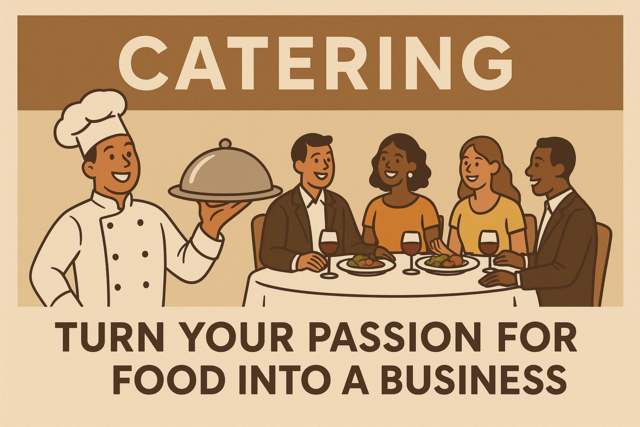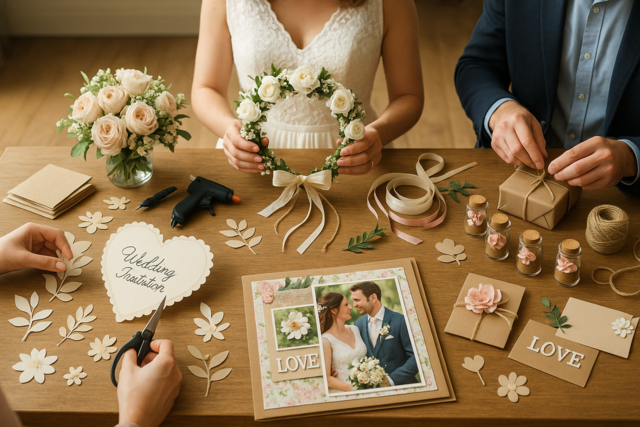Cocktails and Bar Beverages
When planning children's birthday parties, cocktails are usually taboo. When you have other parents helping out, it's best not to serve alcohol. These are the same people who will be driving their child home.
Bar mitzvahs and bat mitzvahs are honoring a child, and both children and adults attend the celebration. There is usually alcohol served and soft drinks or punch for the children. This means the party planner will need to invent some form of entertainment for kids of all ages, and a reserved amount of time for speech making; the rest of the evening is spent dancing.
Anniversary parties frequently include children, whereas retirement parties are usually all adults.
Cocktails represent a significant portion of the cost for any event. That's why it's important for party planners to be familiar with cocktails and drink recipes when planning a reception or cocktail hour. A party planner's secret is to include a signature drink into parties and events. It not only helps make the occasion memorable, but it's cost effective as well.
For those wanting a trendy vodka martini cocktail with fruit flavors, cosmopolitans -- also known as cosmos -- are a favorite. Needless to say, a party planner must use a professional bartender who is familiar with past and current cocktail trends.
Here are some of the latest trends in non-alcoholic and alcoholic beverages/cocktails:
Non-Alcoholic Beverages
- Flavored/enhanced water
- Espresso/specialty coffees
- Bottled water
- Tea
- Filtered water
Alcoholic Beverages/Cocktails
- Craft/artisanal/micro-brewed beer
- Energy drink cocktails
- Martinis/flavored martinis
- Mojito
- Micro-distilled/artisanal liquors
Restaurants serve as one of the most popular off-site venues selected by event planners, and it's understandable when planners try to stay ahead of the next big food and beverage or catering trend. With $558.3 billion projected in restaurant food and beverage sales for the U.S., special event and party planners are eager to incorporate catering trends into their menu selections. Whenever you meet with your catering manager to plan your event menu, research the latest food and beverage trends and ask you caterer to incorporate them into the menu.
You will also need to serve appetizers along with the pre-dinner cocktails and other beverages. Many planners serve only champagne at art showings and celebrity introduction parties. If a client decides on champagne only for the alcoholic beverage, plan on having servers and a bartender.
One more thing to keep in mind: If children are invited to the party, don't let them run throughout the house and dominate the party. Designate an area for them to play, and hire your baby sitter to watch over things. DO plan separate food for the kids. Have pizza delivered, make chicken nuggets or other child-friendly foods ahead of time.
Make it easy on yourself. Rather than pouring beer and wine yourself, set up a station with red wine and white wine glasses, beer glasses, and ice buckets. Uncork white and red wine, plug with decorative stoppers and place them into the wine buckets filled with ice. Put bottles of beer in a cooler or large beverage bucket with ice. Set out wine keys and bottle openers. Make this table a lovely decorative focal point where guests can serve themselves.
Appetizers
We seem to have a love-hate relationship with party appetizers. Some are deliciously laden with naughty calories, others are totally irresistible as we munch down the promised last one. The best thing about appetizers is they help absorb the alcohol. DO plan wisely for amounts. An all-appetizer party should have 10 to 15 appetizers per person. A dinner party should have three to five appetizers per person. Add a beverage, some pre-planning, a little creativity, and a relaxed attitude, then let the party begin!
Here is a listing of the top 10 favorite appetizers. All of these recipes are available at www.southernfood.about.com/od/appetizersandsnacks.
- Ground Beef Nachos
- Barbecued Chicken Wontons
- Tangy Cocktail Franks
- Artichoke Dip With or Without Roasted Red Peppers
- Festive Sausage Balls
- Broiled Barbecued Chicken Wings
- Creamy Shrimp Dip
- Crab-Stuffed Mushrooms
- Sweet and Sour Meatballs
- Tortilla Roll-Ups
Appetizer or cocktail parties are a great way for guests to socialize while eating. Appetizers can please your party guests, help create a festive atmosphere, and have an enjoyable mouthful -- all at the same time.
Prepare dips and marinated dishes one or two days ahead. Decorate the party area and set out non-perishables, serving utensils, and dishes the prior night. Beware of Fido. Pre-slice and chop ingredients, and store them in the fridge in plastic bags or containers. Assemble them the day of the event. When serving sweets, figure three to five per person. Beverages should average about one cup non-alcoholic beverages per person, per hour; coffee and tea is about one cup per person.
Don't try to serve all vegetarian appetizers just because one or two people are vegetarians. The best strategy is to plan an appetizer menu with variety. Stay away from repetition of food or flavors. Too much chicken is too much chicken. Bland appetizers don't go over well, nor do flavors that conflict with one another. Make certain you have enough texture and color. Too many fried foods are a turn-off; fresh is in.
Fruit slices and a simple veggie tray are good fill-ins for vegetarians and weight-watchers. Garnish the trays with kale, parsley, olives, and lemon or lime peel. Line bowls with leafy cabbage leaves. Make appetizers small enough to be eaten in one bite with less mess.
Use your most beautiful serving bowls and platters, and try using other interesting vessels -- such as hollowed out bread, cabbage, or watermelons. If possible, place appetizers in multiple places. Stack fresh trays of appetizers in the kitchen, or outside if the weather is cold enough. Keep a waste receptacle handy for used napkins, skewers, and paper plates.
Don't use your party guests as guinea pigs. If you want to try out a new recipe, make it ahead of time to see how it tastes. Leave nothing to chance.
Buffet or Sit-Down Dinners
When planning, seek out answers to the following basic questions:
1. Who are the attendees? How many of the attendees will be at the event? Children? Adults? A child's birthday party, for example, will have mostly children attending and parents helping to oversee the children.
2. What is the theme or occasion? What type of party will this be? A family reunion? A birthday or anniversary party?
3. When is the actual date of the party?
4. Where will it be? If the client doesn't have a place in mind, dig into your book of venues and come up with some ideas. Indoors or outdoors? Formal or informal?
5. Why? Every client has a reason for putting on a party or event. Perhaps the family has drifted apart and it's time to renew old relationships,whereas, a celebration of 50 years of marriage doesn't need much explanation.
6. How? This may take some interviewing expertise to determine exactly what the client wants the guests to remember about the party. Will it be the food? The entertainment? The special desert tasting? An auction? Answering these questions will help to decide which aspects of the party will be important to your client.
7. How much? Since most people are watching their pennies nowadays, the clients may have to lower their expectations about some ideas. Telling clients this news is not a job for the timid or faint-hearted. Tact is a word to be stretched to the limit here, if you want to stay in your client's good graces.
A major disappointment may be when the client wants an elegant sit-down dinner and the budget only allows for a buffet. Here is where asking the right questions can pave the way toward a more financially realistic conclusion. You might ask what type of food and beverage they had in mind, how elaborate must the decorations be? Is it the client's desire to have entertainment? If so, what kind of entertainment? All of these questions, plus whatever else comes to mind, are important. Always project a positive attitude when suggesting to the client what you can do and not what you can't.
It's acceptable to give the client a general sketch of the design, but it's best to wait until a contract is signed before giving away all of your creative ideas.
If you are planning smaller events, you are less likely to require food sculptures, ice sculptures, or the more elaborate presentations. Whether you are planning a sit-down or buffet dinner, always hire a caterer who not only serves delicious food, but provides a variety of food, various colors and eye-appealing textures. Simpler food works best for informal occasions, while extravagant foods work best for formal occasions. Caviar is best for elegant occasions, while sliders are great for an outdoor party.
Knife and fork foods are best for sit-down dinners, while finger foods are fine for buffet dinners. Sit-down dinners have the distinction of fine china, glassware, silver, and servers taking care of your needs. Give a lot of thought to the presentation effect of the buffet.
Avoiding Rubber Chicken and Other Unappetizing Food
What's wrong with this picture? Everything. Even with the colorful serape background, the tamales look bland, unappealing, and unimaginative. A bed of parsley or dark greens would be visually pleasant to the eye, when paired with a cilantro dipping sauce.
A feast of chicken, mashed white potato, cauliflower, and white flour dinner rolls suffers from "white phobia." Wouldn't a purple cabbage salad be beautiful with mashed sweet potato? Think outside the box. A professional caterer would never serve a "white" meal. Mexican food is renowned for its eye appealing color.
Match the food to the party theme. Outdoor parties usually have a casual theme, unless you're planning an outdoor wedding reception. July 4th is easy, a Valentine's party can be a delightful event, and even a doggie marriage ceremony can be a blast for pooches and people.
Determining Cost Per Person
Typical cost per person depends on many different party agendas. The example here is the typical costs of a bachelorette party. Traditionally, the maid of honor throws and pays for the bachelorette party. If money is an issue, she can ask other members of the wedding party to contribute to planning and expense.
As for any other party, the first step is to pick an activity or theme -- usually based on the tastes of the bride-to-be. If you are considering live entertainment, first check with the would-be bride to see if she is in agreement. Here is an idea of the cost per person for specific bachelorette parties.
- $15 to $30 per person. A casual meal at the host's home, followed by informal activity (bingo, charades, etc.) Food can consist of a back yard barbecue, spaghetti or lasagna with salad and bread, or chili and corn bread.
- $35 to $150 per person. More upscale dinners and activities, either at the host's house, or at a restaurant. After-dinner activities can include clubbing, jewelry making, horse shoes, and a slumber party. Included is the cost for a continental breakfast.
- $150 to $300 per person. This can include hiring a personal chef to come to the host's home and cook a gourmet meal, a five-course meal at an upscale hotel, a spa treatment and a sushi meal, a limo party and a hotel suite party.
There can be prop costs, such as a tiara for the bride; party favors can cost anywhere from $5 to$15 dollars per person. Alcohol, such as wine and champagne, can run from a medium-priced bottle of wine or champagne, to the high-end sticker shock.
The caterer can break down costs for you when he or she submits their proposal. There are many party variations your caterer can help you with. Be prepared to disclose exactly what your budget is for the party.
























